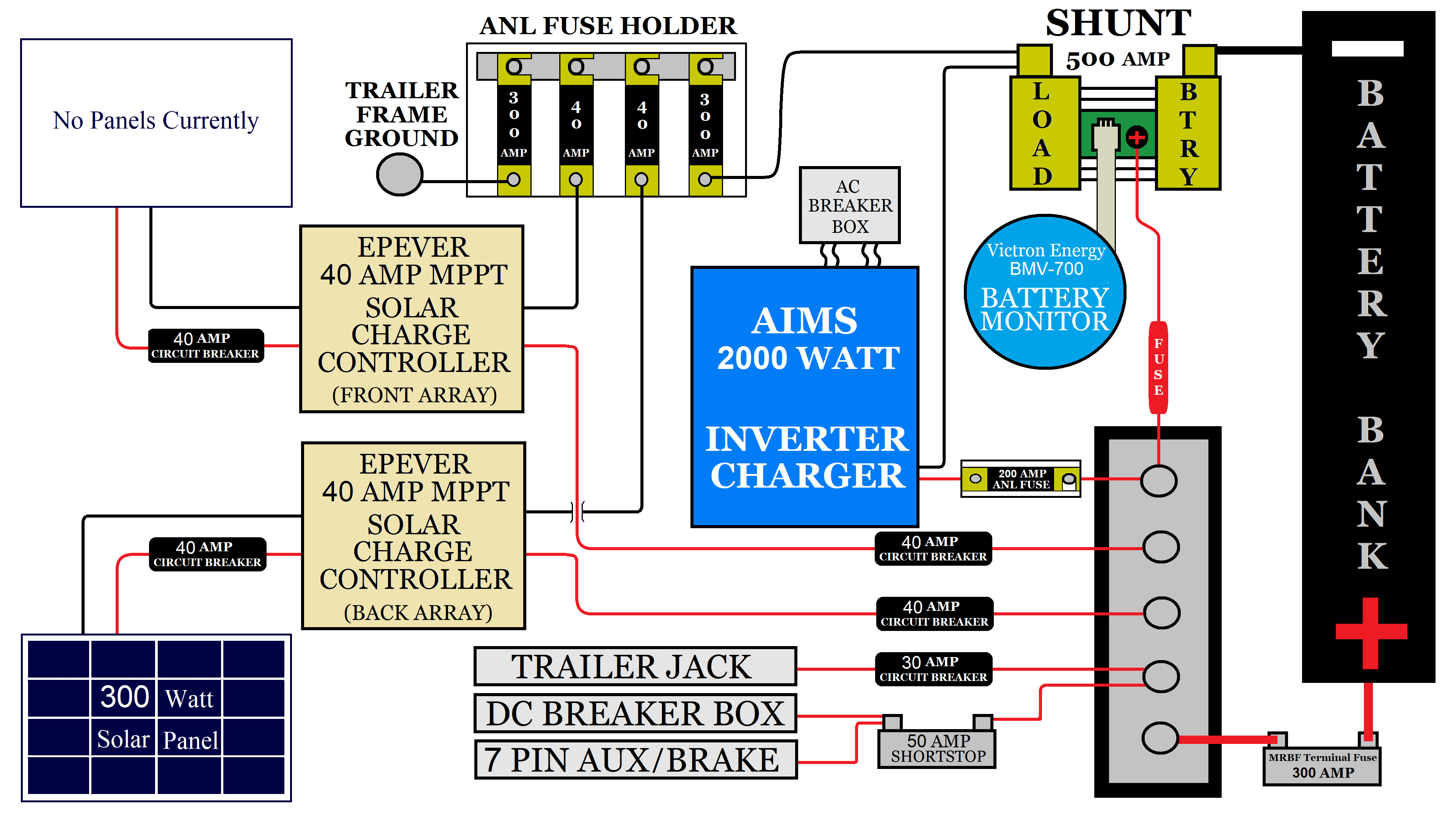Off-grid Camper Solar System Wiring
“Off-grid camper solar system wiring”
These systems allow campers to harness the power of the sun to generate electricity, providing a reliable and sustainable source of energy for their vehicles. However, designing and installing an off-grid camper solar system can be a complex task, requiring careful consideration of several factors, including solar panel selection, battery choice, and wiring.
In this article, we will provide a comprehensive guide to off-grid camper solar system wiring, covering the basics of solar energy, system components, wiring principles, and best practices for installation. Whether you’re a seasoned camper or a beginner, this guide will help you design and install a reliable and efficient off-grid solar system for your camper.
Understanding Solar Energy and System Components
Before diving into the wiring aspect of an off-grid camper solar system, it’s essential to understand the basics of solar energy and the components involved. Solar energy is generated when sunlight hits a solar panel, causing electrons to flow and create an electrical current. The key components of an off-grid camper solar system include:
- Solar Panels: These are the primary source of energy for the system, converting sunlight into electrical energy.
- Charge Controller: This component regulates the flow of energy from the solar panels to the battery, preventing overcharging and ensuring optimal battery life.
- Battery: Deep cycle batteries, such as lead-acid or lithium-ion, store excess energy generated by the solar panels for later use.
- Inverter: This device converts DC power from the battery into AC power, allowing you to use standard household appliances.
- Wiring and Connectors: These components connect the various system components, enabling the flow of energy and controlling the electrical current.

Wiring Principles and System Design
When designing an off-grid camper solar system, it’s crucial to consider the wiring principles and system design to ensure efficient and safe energy transfer. The following principles should be followed:
- Series and Parallel Wiring: Solar panels can be wired in series (positive to negative) to increase voltage or in parallel (positive to positive) to increase current. The configuration will depend on the system’s voltage and current requirements.
- Voltage Drop: Voltage drop occurs when energy is lost due to resistance in the wiring. To minimize voltage drop, use larger gauge wires and keep them as short as possible.
- Fuses and Circuit Breakers: These components protect the system from overcurrent and short-circuit conditions, ensuring safe operation and preventing damage to components.
- Grounding and Bonding: Proper grounding and bonding are essential for system safety, preventing electrical shock and ensuring the system operates correctly.
.jpg)
Wiring Best Practices for Off-Grid Camper Solar Systems
To ensure a reliable and efficient off-grid camper solar system, follow these wiring best practices:

- Use Color-Coded Wires: Color-coding wires helps identify their purpose and polarity, reducing the risk of incorrect connections.
- Label Components and Wires: Labeling components and wires makes it easier to troubleshoot and maintain the system.
- Use Waterproof Connectors: Waterproof connectors protect the system from moisture and ensure reliable connections.
- Keep Wires Organized: Organizing wires reduces clutter, making it easier to identify and access components.
- Test the System: Before using the system, test it to ensure all components are functioning correctly and safely.
Step-by-Step Wiring Guide
Now that we’ve covered the principles and best practices, let’s walk through a step-by-step wiring guide for an off-grid camper solar system:
- Connect Solar Panels: Connect the solar panels to the charge controller, following the manufacturer’s instructions for series or parallel wiring.
- Connect Charge Controller to Battery: Connect the charge controller to the battery, ensuring the correct polarity and voltage.
- Connect Battery to Inverter: Connect the battery to the inverter, following the manufacturer’s instructions for wiring and configuration.
- Connect Inverter to Load Center: Connect the inverter to the load center, which distributes power to the various appliances and devices in the camper.
- Connect Fuses and Circuit Breakers: Connect fuses and circuit breakers to protect the system from overcurrent and short-circuit conditions.
- Ground and Bond the System: Ground and bond the system to ensure safe operation and prevent electrical shock.
Common Wiring Mistakes to Avoid
When wiring an off-grid camper solar system, it’s essential to avoid common mistakes that can compromise system performance and safety:
- Incorrect Polarity: Ensure correct polarity when connecting components to prevent damage and ensure safe operation.
- Inadequate Wire Sizing: Use larger gauge wires to minimize voltage drop and ensure reliable energy transfer.
- Poorly Secured Connections: Secure connections to prevent loose wires and ensure reliable operation.
- Insufficient Grounding and Bonding: Ensure proper grounding and bonding to prevent electrical shock and ensure safe operation.
Conclusion
Designing and installing an off-grid camper solar system requires careful consideration of several factors, including solar panel selection, battery choice, and wiring. By following the principles and best practices outlined in this guide, you can create a reliable and efficient off-grid solar system for your camper. Remember to test the system before use and avoid common wiring mistakes to ensure safe and effective operation. With a well-designed and installed off-grid camper solar system, you can enjoy the freedom and convenience of renewable energy on the go.
Additional Tips and Recommendations
- Always refer to the manufacturer’s instructions for specific component installation and wiring guidelines.
- Consider consulting a professional solar installer if you’re unsure about any aspect of the installation process.
- Regularly inspect and maintain the system to ensure optimal performance and extend its lifespan.
- Monitor system performance using a monitoring system or app to identify potential issues and optimize energy production.
By following this comprehensive guide and taking the necessary precautions, you can enjoy a reliable and efficient off-grid camper solar system, providing you with the freedom to explore and enjoy the great outdoors while reducing your environmental footprint.
